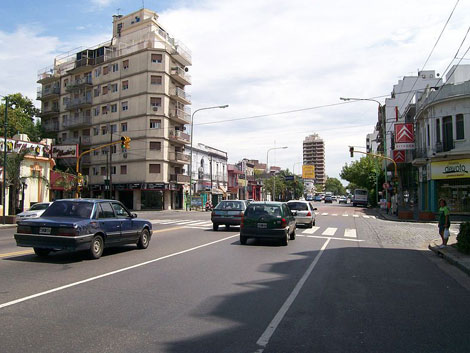
Agronomía
Agronomía is a small barrio in to the west of the city Buenos Aires. It is bordered by Parque Chas to the north, Paternal to the east, Villa del Parque and Villa Devoto to the south and Villa Pueyrredon and Villa Urquiza to the west.
If this is the first time that you have heard of the barrio named after the science of crop production then read on to find out what’s on offer.
An introduction to Agronomia
The history of Agronomía can be traced back to the late 1700s when the land on which it stands was owned by the Jesuit group Chacra de los Jesuits. In 1769, the Jesuits were expelled by the Buenos Aires government who conveniently commandeered the land and donated it to the Real Colegio de San Carlos. This later became Colegio Nacional de Buenos Aires, one of Argentina’s most prestigious secondary schools that counts General Manuel Belgrano, creator of the national flag, and ex-presidents Carlos Pelligrini and Roque Saenz Peña as former alumni. At this time, the region went by Chacarita de los Colegiales, a reference to the first generation of students that spent their vacations here.
Little changed until the turn of the 20th century when the government commissioned the development of a 185-hectare park, of which 30-hectares were set aside for the building of an agronomic station and agricultural school to help support the agro-export industry of the era. The park formed the nucleus of the area and the barrio grew progressively around it. The barrio also witnessed various changes of name – Del Oeste, Nacional and Buenos Aires – before eventually taking its present day name of Agronomía.
Today, some of the most notable landmarks of Agronomía are two branches of the Universidad de Buenos Aires (UBA), namely the Facultad de Agronomía and Facultad de Ciencias Veterinarias, which provide educational services to a large portion of both Buenos Aires and Argentina.
Things to see, do or both
If you like to take a stroll around and discover things at a whim then head to the northwestern corner of Agronomía where you will encounter an interesting street layout. Resembling a spider’s web, there are three-to-four circling streets complete with crisscrossing counterparts which, for the geographically-challenged, can make getting confused a simple thing. Moreover, the circling streets and those leading off them are curiously named after major European cities; Constantinople, La Haya (The Hague) and Sofia, amongst others. You might just find your home town and the chance for a nerdy tourist photo.
The southern half of the barrio is predominately occupied by the universities and the Facultad de Ciencias Veterinarias houses the Museo de Anatomia Veterinaria, a collection of animal anatomy exhibits. The Facultad de Agronomía is home to the Observatorio Central de Buenos Aires.
Nightlife and restaurants
El Crisol Teatro (Arismendi 2658). For a spot of evening culture and to support a local theater group, head along to the unassuming El Crisol for productions of Shakespeare classics like Macbeth and Richard III, amongst others.
Why it’s hot / Why it’s not
For those that have a desire to visit a sleepy neighborhood then Agronomía is far removed from commercialism of the ‘cooler’ Buenos Aires barrios. What’s more, if you are into sport and recreation you’ll find a host of sport clubs to join.
What you might miss out on are entertainment options, although, if you are the type that likes to explore then there is nothing to say that you will not stumble upon a hidden parrilla or café – just try to keep it a secret for as long as you can before the rest of the world finds out.

One Comment on ““Agronomía””
“Resembling a spider’s web, there are three-to-four circling streets complete with crisscrossing counterparts which, for the geographically-challenged, can make getting confused a simple thing.”
Since 2005 that zone isn’t Agronomía, it’s Parque Chas neighborhood.